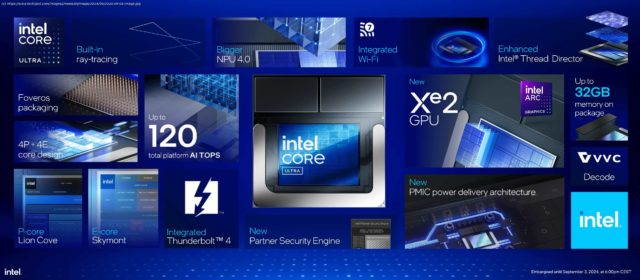Inspired by the competitive threat from Arm-based chips such as Apple’s M-series SoCs and Qualcomm’s Snapdragon X-series, Intel made a number of dramatic changes to its chip.
In context: Competition is indeed a beautiful thing, especially in the tech world. There’s just something about the threat of being dethroned from the top of the performance hill that seems to trigger the kind of higher-risk changes that are often needed to see significant improvements from one generation of a chip or device to another. That certainly seems to be the case with Intel’s new Core Ultra Series 2 chips, codenamed “Lunar Lake.”
Inspired by the competitive threat from Arm-based chips such as Apple’s M-series SoCs and Qualcomm’s Snapdragon X-series, Intel made a number of dramatic changes to its chip architecture for Ultra Series 2 (see my column “Intel Strikes Back” for more).
Amongst the alterations: integrating system memory into the chip, dropping support for hyperthreading, reducing the total number of CPU cores, and more. When many of these changes were first revealed, they seemed confusing, if not downright odd, especially in comparison to the kinds of architectural changes Intel has made for many, many years.
Intel has formally announced the release of its Core Ultra 200V SoCs ahead of IFA Berlin. According to Intel’s benchmarks, the new performance numbers speak for themselves as they have not only caught up with both Macs and Snapdragon-based notebooks on CPU and NPU benchmarks, it has also surpassed them in many cases.
Intel says the new chips also beat others on many battery-life and performance-per-watt tests. Given how much attention and praise have been lavished on the Arm-based offerings regarding their battery life, this latter point is particularly noteworthy. Many had (mistakenly) written off x86-based PCs as being incapable of matching the Arm-based offerings on power-related issues, but these new performance-per-watt-focused tests clearly demonstrate that the instruction set architecture (ISA) is not the defining factor for system power consumption.
Home
United States
USA — IT Intel's Lunar Lake reignites PC competition, Core Ultra Series 2 is now...






